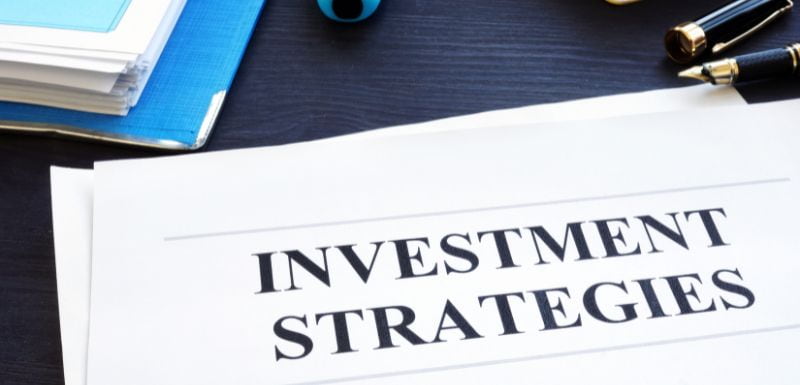Gold: Why Do Indians Buy Gold, Its Returns, How To Buy, And Is Buying Gold A Good Investment?

On 22nd March 2024, the 24-carat gold prices in Delhi hit an all-time high of Rs. 67,985/tola. The price rose after the US Federal Reserve, in its monetary policy meeting on 20th March, indicated that it will cut interest rates in the second half of 2024.
Gold has given good returns of 12.6% in the last one year (as of 29th February 2024). So, why do Indians buy gold? Also, you must be wondering what are the returns it has given, how to buy, and how much should you invest in gold. In this article, we discuss the answers to all the above questions.
Why Do Indians Buy Gold?
India is one of the world's largest importers and consumers of gold. In 2023, India imported 747.5 tonnes of gold, the second highest after China. So, why do Indians love buying gold so much? Let us look at some of the reasons.
Hedge Against Inflation
In India and most parts of the world, gold is majorly bought as a hedge against inflation. During 2022, when inflation was high in most economies across the globe, including India, gold gave good returns.
In the calendar year 2022, gold was the best-performing asset class in India, with 11.8% returns. It gave better returns than real estate (9.1% - based on NHB House Price Index), Nifty 50 Index (5.7%), fixed income (4.1% - based on average returns of some debt mutual funds), and US equities (-9.1% - S&P 500 Index).
Data source: FundsIndia Wealth Conversations – March 2024)
Safe Haven During Uncertain Times
Gold is considered a safe haven during uncertain times such as pandemics, geographical wars, trade wars, political instability, etc. It has historically given good returns during such uncertain times in the past. For example, during the Covid-19 pandemic, gold gave 27.6% returns in calendar year 2020. It was the best-performing asset class in that year.
Similarly, during the demonetisation uncertainty, gold gave 10.9% returns in the calendar year 2016. These returns were better than debt (9.2%), real estate (7.6%), and the Nifty 50 Index (4.4%).
Financial Goals
Many individuals buy gold to fulfil their financial goals. The most common goal for accumulating gold is for their child’s marriage. Most ‘Big Fat Indian Weddings’ are incomplete without the glitter of gold jewellery.
Diversification Of Investment Portfolio
Gold as an asset class plays an important role in portfolio diversification. It has low to no correlation with other asset classes like equity, fixed income, real estate, etc. Thus, it is usually not affected by the movement of these asset classes.
High Liquidity
Gold is highly liquid. It can be easily converted to cash without much loss in value.
Jewellery Consumption
In India, there is a high demand for gold jewellery in the form of bangles, earrings, chains, bracelets, etc. People like to wear gold jewellery during weddings, parties, festivals, and other occasions.
Auspicious Occasions
People consider it auspicious to buy gold on occasions such as Akshay Tritiya, Dhanteras, Diwali, and other festivals.
Gifting
Gold is a popular gift on occasions like childbirth, marriages, anniversaries, festivals, birthdays, etc.
Prosperity And Status Symbol
Some people consider the possession of gold a symbol of prosperity, while some consider it a status symbol.
Gold Price Performance
At the start of the article, we saw how gold prices reached all-time highs in March 2024. Over long periods, gold has performed well as an asset class.
20-year Gold Price Chart

(Source: https://goldprice.org/gold-price-history.html)
Note: The above data is as of 22nd March 2024.
The above chart shows how the price of 1 gram of gold has moved from levels of around Rs. 540 to Rs. 5,830 in the last 20 years. During this period, the gold price has grown at a 12.36% CAGR which is a good return.
How Can You Buy Gold?
We have understood why you should buy gold and what are the returns it has given in the past. Now, let us look at the different ways of buying gold.
Jewellery
You can buy gold jewellery if you want to buy it for consumption. Depending on purity, you can choose gold from 24-karat, 22-karat, 18-karat, 14-karat, 10-karat, etc. The 24-karat has the highest purity with 99.9% gold composition. Jewellery involves making charges over and above the gold price. You may have to incur bank locker charges to keep it safe, and insurance charges for protection against theft.
Coins And Biscuits
If you want to buy physical gold for investment purposes, you may buy gold coins and biscuits. You usually get coins in denominations like 1 gram, 2 grams, 5 grams, 10 grams, etc. You can sell it anytime or convert it to jewellery. As discussed above, you may have to incur bank locker charges and insurance charges. Coins and biscuits are not the best way to buy gold for investment purposes.
Gold ETFs
You can buy electronic gold through Gold Exchange Traded Fund (ETF) units. Various AMCs offer these and are listed on the stock exchanges, such as NSE. Usually, one ETF unit is one gram of gold. An ETF tracks and mirrors the price of physical gold.
You need a broker's trading and demat account to buy gold ETF units. When you place a buy order, the purchase amount will be debited from your bank account, and the equivalent gold ETF units will be credited to your demat account. Similarly, you can sell gold ETF units through your trading account at the click of a button. The difference between your gold ETF selling and buying price is your profit or capital gain.
Gold FoF
You cannot do a systematic investment plan (SIP) with gold ETFs. However, with a Gold Fund of Funds (FoF), you can buy gold through a SIP or a lumpsum amount. You get fractional units in your folio account equivalent to the SIP amount on the day of order execution. You can redeem the units with the AMC at any time.
You can start an SIP in a gold FoF for long-term financial goals, such as accumulating gold for a child's marriage. A gold FoF is commonly known as a gold mutual fund.
Sovereign Gold Bonds (SGBs)
The RBI offers the Sovereign Gold Bonds (SGBs) on behalf of the Central Government. The bonds are a way of buying gold in electronic format. The RBI publishes the SGB issuance calendar from time to time. You can apply when a new tranche is issued or purchase earlier issued bonds listed on the stock exchanges.
The bonds are issued in denominations of 1 gram of gold and multiples. SGBs pay an interest rate of 2.5% p.a. (payable half-yearly). The SGBs have a tenure of 8 years. You can redeem them with the RBI on maturity. The equivalent price of gold on the date of redemption will be transferred to your bank account. You can also do pre-mature redemption after five years or sell them through the stock exchange.
How Much Should You Invest In Gold?
In the above section, we understood how we can buy gold. Now, the important question is how much should you invest in gold? The answer has two parts to it. The first part is whether you have a financial goal, like accumulating gold for your child's wedding. If yes, calculate the quantity of gold you need for this purpose and by when. Accordingly, you can start a SIP in a gold FoF or purchase SGB units regularly whenever they are issued.
The second part is whether you are investing in gold for portfolio diversification. If yes, you may allocate 10-15% of your overall portfolio to gold. It will shield your portfolio against inflation and act as a safe haven against economic uncertainty.
Gold Can Take Sheen Off Your Investments Or Add Sparkle To Them
Gold can give you decent returns in the long run. However, remember that gold has a history of long periods of underperformance / consolidation and short periods of outperformance bursts. During periods of underperformance, it can test your patience and take the sheen off your investments. But during periods of outperformance, it can add sparkle to your investments.
Your Investing Experts
Relevant Articles
9 Personal Finance Mistakes to Avoid
You must have heard the famous phrase: "Knowing is half the battle". It signifies the importance of being informed. The other half is the application of knowledge. Unknowingly, people do make mistakes and learn from them. However, learning from personal finance mistakes can come at a cost and derail or push you back in your financial planning journey. Hence, it is best to be aware of these money mistakes and avoid them so your financial planning journey can be smooth. In this article, we will discuss some common financial mistakes to avoid.
Steps to Construct a Great Investment Portfolio – A Guide for Smart Investors
Living in today’s information age has its pros and cons. You have your broker, family members, friends, colleagues, and others giving you friendly investment tips. You also have TV channels, newspapers, magazines, social media and other internet channels bombarding you with investment recommendations/tips.
Investment Strategies: Growth and Value Investing
The stock markets go through various business/economic cycles of ups and downs from time to time. During these phases, various stocks do well based on certain criteria. For example, growth/momentum stocks usually do well during bull markets, and value stocks do well during bear markets. The investment strategy that you follow influences your returns. In this article, we will understand the various investment strategies and which one you should follow to maximise your portfolio returns.



